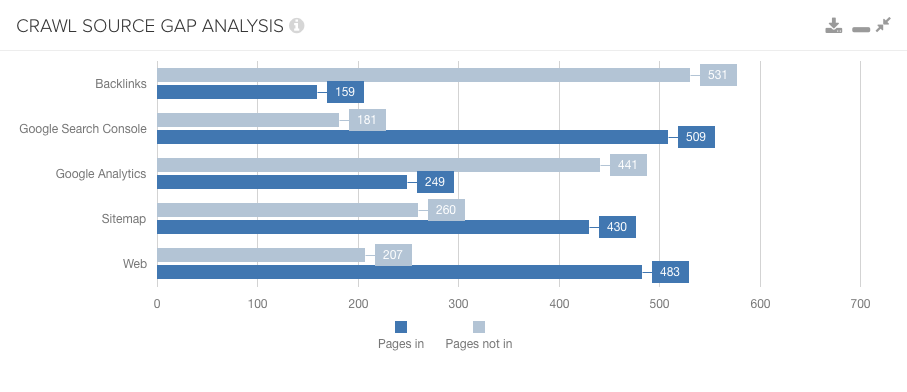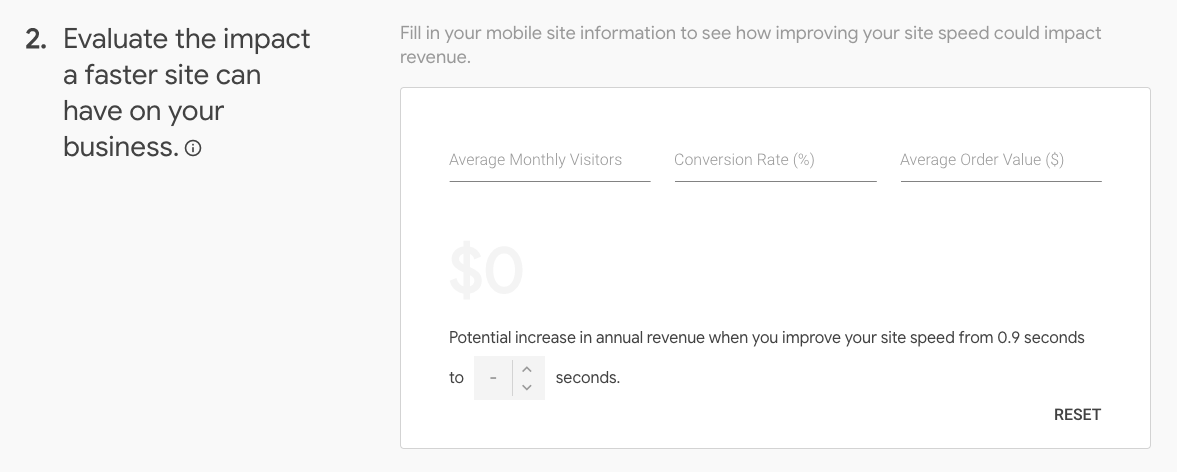Chapter 3: Analyzing & Managing Enterprise Websites
You might think that the biggest challenges in enterprise SEO are analyzing large datasets and identifying issues within them, however, this is often only half the battle. The next step is to get your recommended fixes added into the company’s development roadmap and eventually actioned.
With large numbers of different items from teams with competing priorities, getting SEO fixes moved up the development queue can be a monumental challenge. That’s why we’ve put together some advice on how to pick your battles and choose the issues that matter most to push ahead with, and how to get them signed off.
There are two key aspects in enterprise SEO. The first is driving things forward, which can be challenging when the risk of breaking things and conflicting priorities of the business often supercede your own requirements in a fast moving company. To do this, you need to provide a business case for what is required, often it isn’t about monetary value directly, but it can be reducing the number of calls received by the call centre, it can be about avoiding loss if a competitor starts doing something. It can be about maintenance rather than growth.
The second part is about ensuring that all development is monitored. Developers are good at checking in when they think something will impact SEO, however, it is often more challenging to teach them that some minor code changes can have a significant impact. Training colleagues is a significant part of the role from both a technical and marketing discipline.
One of the best skills that any SEO within an enterprise company requires is the ability to manage both upward and downward. This involves stakeholder management, as well as making sure developers are informed about why SEO action is taken.

It can be impossible to get SEO issues fixed or added to the company’s development roadmap without careful prioritization and a business case to prove the value of implementing the fix.
Issue prioritization
SEOs want to ask for everything we possibly can to get audit tasks actioned, because we don’t have any control over the search landscape; our rankings are decided by Google and the other search engines. This means that we often throw everything we possibly can at a site to try and move the needle, hoping that at least one of those actions positively impacts the bottom line.
That isn’t realistic in an enterprise company, however. You need to be nimble and pick your projects and battles carefully in order to make the biggest impact possible. Find the easiest path to success by speccing out any projects first to make sure they give the maximum value for minimum effort.
Here are some of the factors to consider when prioritizing your SEO tasks:
- Will search engines care about this change? Invest your efforts in the areas that impact Google’s ranking algorithms, as these are focused around UX which will also improve the quality of your website as a whole.
- Will this change impact crucial business KPIs? Adding a new sitemap won’t help to increase conversions directly, however, refining keyword targeting and improving content relevance can.
- How many projects will this change positively impact? Create a map of all your SEO actions to visualize common fixes between them that will impact multiple projects, and also map this against all of the other projects in the company roadmap to see if your changes will have a wider impact on the business.
- What will be the impact of leaving this issue unfixed? Issue prioritization isn’t just about adding value, it’s also about mitigating risks and thinking about how performance will be negatively impacted if an issue is left without implementing a fix.
Before investing in any SEO tool or fix (or any platform/service for that matter), one should always consider the actual value it will add to their traffic/performance. Always assess any new investment in terms of its expected contribution to time saving, resource efficiency, and actual return on investment (both in the short term and long term).

You need to be ruthless when prioritizing the tasks that will get onto the roadmap. SEOs almost need to become project managers as they need to set out clear expectations of delivery dates, the teams involved in implementing the fix, and being a central point of communication between these teams to ensure the fix is completed.
Consider elements like current traffic, impressions and CTR, ease of implementation, the time that it will take to implement, the conversion potential, the cost of the fix and the size of the growth opportunity.

Source: Eli Schwartz
For me, the main challenges in enterprise SEO are prioritisation and resource. For example, knowing which products to prioritise when looking into content creation and balancing SEO needs vs business needs. You need a lot of investment to develop a new product while maintaining a certain level of effort around existing core products, so it can get tricky sometimes to allocate time and resource to the likes of several product managers.
To tackle this issue, think about what can be done internally, and what can be outsourced in order to support all products in the best conditions. It’s also important to explain that SEO is not an “instant results” acquisition channel, however, this can be challenging because a lot can be expected from SEO traffic.

Use metrics like traffic, implementation effort and growth potential to help you prioritize the most valuable SEO fixes that will make it onto the roadmap.
To gather the data you need to be able to prioritize tasks in this manner, it’s crucial to make use of the different data sources available to you.
In enterprise SEO, it is important to leverage the myriad data sources that exist externally, integrating them, and making impactful decisions. There is so much actionable data available to us as digital marketers. There is so much of it in fact, that finding the needles in the haystack that should be prioritized is the challenge. But it can be done. Modern tools can help you aggregate massive data sets, score, and rank the data. You can go even further—and drive even more value—when you join the datasets that you can get from your tools. For example, your organic search data can inform your paid search tactics, and vice versa.

Being able to integrate data from your different tools makes this process a lot easier, as you can see all of the metrics you need for prioritisation in one place.

Source: Lumar
Creating an impactful business case for SEO
In order to get an SEO fix actioned within an enterprise organization, you’ll need to carefully plan a proposal and create an impactful business case that demonstrates why the project is important and what value the business can expect to gain from actioning it. This stage is crucial for getting anything done.
You might be the best in the world in terms of identifying and debugging SEO issues, but unless you know how to work with internal teams, develop business cases, communicate with clarity, and really sell the value of your channel, you will struggle to get anything done at all.

Source: Search Engine Journal
If you can demonstrate the following three key elements for your business case, you’ll have a much easier time winning over stakeholders and getting the buy-in and resources you deserve:
1. SEO knowledge
Compile best practice advice from Google, as this is a big name to have on your side. Use official recommendations and documentation from search engines where possible to support your suggestions.
Example: Page speed is a ranking factor, and really slow sites won’t be shown prominently to users in Google’s search results.
The Speed Update, which enables page speed in mobile search ranking????, is now rolling out for all users!
More details on Webmaster Central ???? https://t.co/fF40GJZik0
— Google Webmasters (@googlewmc) July 9, 2018
2. Conversion impact
To create more urgency and immediacy, highlight what is failing on your site now. Especially the customer’s journey to conversion.
Example: Google Analytics data shows a correlation between page load time and bounce rate. When site load times spiked, customers abandoned the site more frequently and didn’t go on to convert.

Source: Google Analytics
3. Website data as evidence
Show data from a recent crawl of your site to show how many pages are of concern. This can help to show the scale of the issue.
Example: Over ⅓ of all pages on the site take too long to fetch, let alone load.

Source: Lumar
These three elements are crucial because the most compelling business case is the one that is both impactful and understandable.
Building a case which clearly articulates the cost and benefits of a project for the organization is key to get your projects prioritized. Your features will always compete with other groups’ priorities. Having a clear ROI calculation, backed up with a good hypothesis and data, will set you up for success in the prioritization discussions. At the same time, be flexible if your projects don’t make the cut, but take your goals down with the upside the project would have given you. You don’t want unrealistic objectives for you and your team because you didn’t secure the resources on the product roadmap.

Tie SEO efforts back to revenue wherever possible, and create models for doing this if they don’t currently exist within your company.
When SEOs report on results it’s often in ranking changes, GSC impressions or organic sessions. Stop this! Tie your SEO results directly to business KPIs. Users, conversions, revenue – what is the metric the CEO of the company cares about? Impact that and getting resources will become much easier.

Incorporate SEO knowledge, conversion impact and website data as evidence within your business case to demonstrate how SEO issues are impacting the bottom line.
You can map SEO metrics to website conversion. Using site speed as an example SEO metric, calculators such as the one in Google’s Test My Site tool can help you demonstrate the impact that page load times are having on your bottom line. You can show stakeholders exactly where SEO improvements, such as increasing site speed, can have a positive impact on the business’ KPIs and revenue.

Source: Test My Site
Utilizing Edge SEO & CDNs
In some cases, enterprise SEOs hit a dead-end where they can’t progress their project no matter how hard they try. Some development pipelines are just too long. Luckily, there are more methods available to SEOs today, such as Edge SEO and CDNs, which allow us to take back more control over implementation.
One constant scenario with enterprise clients when executing SEO programs are delays. Delays in getting technical resources. Delays in key page template alterations or programmatic modifications. Delays in the development queue.
In the past, there was little that an SEO agency or in-house specialist could do in these situations without having the development resources prioritized at the executive level. As a result, SEO improvements from a technical perspective were left in limbo, for months, years, if done at all.
Your business can conceptually leverage Google Tag Manager, as well as server-side CDN modifications to impact your SEO in a positive fashion. Although not as ideal as “hardcoded” changes, this option provides a level of opportunity to affect change when technical resources are limited or a CMS isn’t capable.

Source: Lumar
Distilled’s ODN and Sloth by Dan Taylor are great examples of some of the options out there for technical implementation for even the most complex CMSs. Make sure you check them out if you’re looking for a solution for getting around long development queues.
I’ve seen dev queues that span, literally, for years. I’ve also seen organizations that are completely unable to change the most basic information on their sites, such as opening times or title tags. In fact, it was this exact issue that prompted the development of our ODN platform a few years ago as a way to circumvent technical limitations and prove the benefits when we did so.

Source: Moz
Edge and serverless technologies focus on closing the gap between the user and the source of data in order to reduce latency and bandwidth use as much as possible. By utilising serverless applications such as Cloudflare Workers, and the soon to be released Akamai EdgeWorkers, we can reduce the obstacles of implementing SEO fixes and making onsite changes posed by some legacy (and modern) platforms and tech stacks. This is what we call edge SEO — and whilst not an entirely new concept, it’s one becoming rapidly more accessible through the advent of edge SEO tools such as Sloth and Spark, and one more in need as marketing and development budgets become more strained.

Edge SEO and CDNs can be utilized as a workaround for implementing fixes despite the limitations of a hard-to-work-with legacy tech stack or a long development queue.
To learn more about Edge SEO, read the recap of the webinar we held with Dan Taylor, where he walked us through the ins-and-outs of the concept and how it can be used to help implement fixes for sites with legacy issues.
Successfully reporting on SEO results
To be able to get more resources allocated to SEO in the future and get even more of your fixes implemented, you’ll need to prove its value. One of the best ways you can communicate this is through reporting.
While enterprise level organisations are well familiarised with the costs of PPC, they are usually surprised to discover that SEO comes with a cost as well (from paid monitoring & crawling tools, to outreach, digital PR and content marketing or developer resources.) In some cases, stakeholders are surprised to such an extent that they won’t finance these tools, or will provide only minimal budgets. This is when it is up to the SEO to get the most they can out of an initial budget and the resources allocated, showcase success across the organisation, and grow SEO awareness slowly and steadily.

In enterprise SEO, there is a requirement for robust, flexible reporting that suits the specific needs of multiple stakeholders that require different levels of detail and shows them metrics that will be of most interest to them. This means that it’s crucial to understand how to create quality reports for the different tiers of your organization.
A content writer, a head of digital and a CMO will all want different things from a report. The content writer will be interested in keyword opportunities and content performance, the head of digital will be focused on brand exposure and lead generation, and the CMO will be more interested in ROI and profitability, for example.
Focus on showing each team/person metrics they can control:
- Dev teams: Technical crawl reports with issues such as internal redirects or 404 reports are relevant things that they can control. We like Lumar for crawl reporting.
- VPs and directors: High-level performance reports like M/M and Y/Y traffic and conversions give them a bird’s eye view of the site and the effects of your SEO efforts. Tying this data to a dollar figure will help make your case. This can include simple analytics data from Google Analytics, or more advanced tools such as our favorite BI tool, DOMO, or its competitor Tableau.
- Product owners/business units: Keyword-level data and traffic to a specific site section that a team works on. An enterprise SEO tool like BrightEdge or Conductor can make these reports easy to manage.

Source: Moz
To get future buy-in for SEO, you need to demonstrate its success through easy-to-understand reports which speak to different stakeholders in the metrics they understand.
Here are some of the things to consider when creating reports for your colleagues and stakeholders:
- Show how SEO is performing, including which efforts are working and where there are opportunities for growth.
- Automate this process where possible through dashboarding.
- Integrate data sources into tools like Google Data Studio for easy management of large website portfolios.
- Use tool APIs where possible to get access to more data and be able to customize the way you use it.
To overcome the key challenges that enterprise businesses face, you need to implement a process that incorporates the following:
- A common reporting structure is key. Senior stakeholders like knowing which reports to look at and the added level of organisation means teams are clear on the metrics that are relevant to them.
- Different markets and teams may use different toolsets, but delivering an internal toolset will drive standardisation.
- Drive automation by leveraging tools like Google Data Studio, which is crucial.
- Taking a data-first approach can reduce costs and increase capability. Focus more on tool APIs rather than their UIs. The data is important, not the interface, not least because using APIs reduces cost.
- Community-driven data analysis and mashups have lessened the need for the time of the Analytics and Data teams at Vodafone.

To learn more about improving reporting and dashboarding in enterprise SEO, read the recap of our webinar with Nick Wilsdon.
Enterprise SEO isn’t easy; it comes with its own set of unique challenges around managing large datasets and navigating complex organizational team structures. This requires both strong analytical skills to collect and interpret data, and interpersonal skills to build internal relationships and get things done.
Despite these challenges, enterprise businesses’ websites also have a lot of power that we can harness. They have a lot of authority and brand recognition which will help with user trust and click-through rates. The significant amounts of traffic coming through enterprise sites means that you can perform effective data gathering and testing for spotting performance trends and feeding into business intelligence. Finally, enterprise companies also have huge teams and budgets available to help you in your efforts, once you’ve managed to convince stakeholders about the power of SEO.

